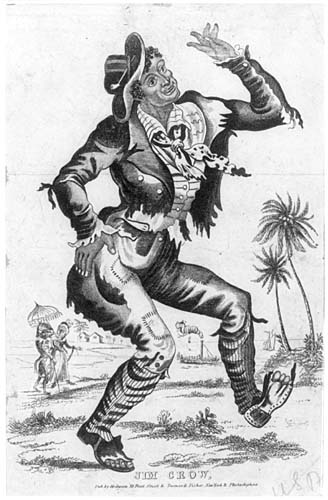Welcome to the early blackface minstrelsy in Britain Database. Please note that this is part of a legacy project funded by the Social Sciences and Humanities Research Council of Canada and the University of Toronto, among others, created in 2006, and ending in 2019. Funding, and any active additions to this project, has now ended, though the entire database was recently revised and upgraded, thanks to the assistance of the University of Toronto Mississauga Library, to accommodate the swiftly changing nature of on-line technology.
This site is fully active as a resource to the public. It is, however, unfinished. The fact that the many people who have worked on this project have now moved on to other things does not preclude continued work on its broader goals, to document the dissemination of one particularly popular and influential--and disruptive--performance idiom in Britain at a crucial time in its history. If someone wants to take up this project in the future, please contact the (former) principal investigator, Stephen Johnson. Further information about the contributors and supporters will be found on other pages of this site.
We hope this project, as it stands, provides on-going support to researchers interested in the rise and international dissemination of the most popular form of entertainment in the English speaking world during the second half of the nineteenth century--whether we like to admit the fact or not.
THE PROJECT:
White performers in blackface make-up were performing in supposed imitation of American slave culture long before 1842. But in that year these entertainers began appearing together as groups in stand-alone entertainments, called minstrel shows. Originating in the northeastern United States, they almost immediately traveled to Britain, where they were particularly popular, and played for a wider audience than they attracted, at first, in America. The Juba Project, named after its most famous, and its most unusual, early practitioner, explores this phenomenon both from a historical and a dramaturgical perspective.
THE JUBA PROJECT's Early Blackface Minstrelsy in Britain Website draws together a range of documentation into a database that allows the visitor to access information on the individuals, troupes, and 'acts,' that toured in Britain during these crucial years, on the venues in which they appeared, and on individual events--to trace the movements of performers, and to locate and disseminate (as attachments) documentary information on these touring, itinerant professionals.
A COMPLEMENTARY WEBSITE:
For a complementary site that helps to explore and explain this database, and provides a bibliography, please see the following:
A legacy url, related to the site as it stands now, is active and useful, though its design is quite old: http://www.utm.utoronto.ca/~w3minstr/index.html
A more 'changeable' url with similar information, on Wordpress: https://thejubaproject.wordpress.com
A published volume of materials related to this project can be found in: Burnt Corke (UMassP, 2012).
One significant focus for this complementary website, and an important part of this project, has concerned the travels of the Ethiopian Serenaders, a troupe name used by several groups of early minstrel performers on tour to Britain beginning in 1846. This troupe was particularly successful in London, played for members of the aristocracy and for Queen Victoria, and toured widely--in effect making minstrelsy 'safe' for the middle classes. Among its performers, perhaps most famously, was William Henry Lane, who toured under the stage name 'Juba' (or 'Master Juba' and 'Boz's Juba'), who was renowned for his dance technique, an early and influential precursor to tap dancing. Lane was a performer of colour in a performance idiom defined by its use of blackface makeup and entirely populated by white performers. Lane was the exception that was accepted in this culture--for a time. Please visit the website for more information, and for other materials that will help to inform and reconsider blackface minstrelsy, and assist in the use of this database.

